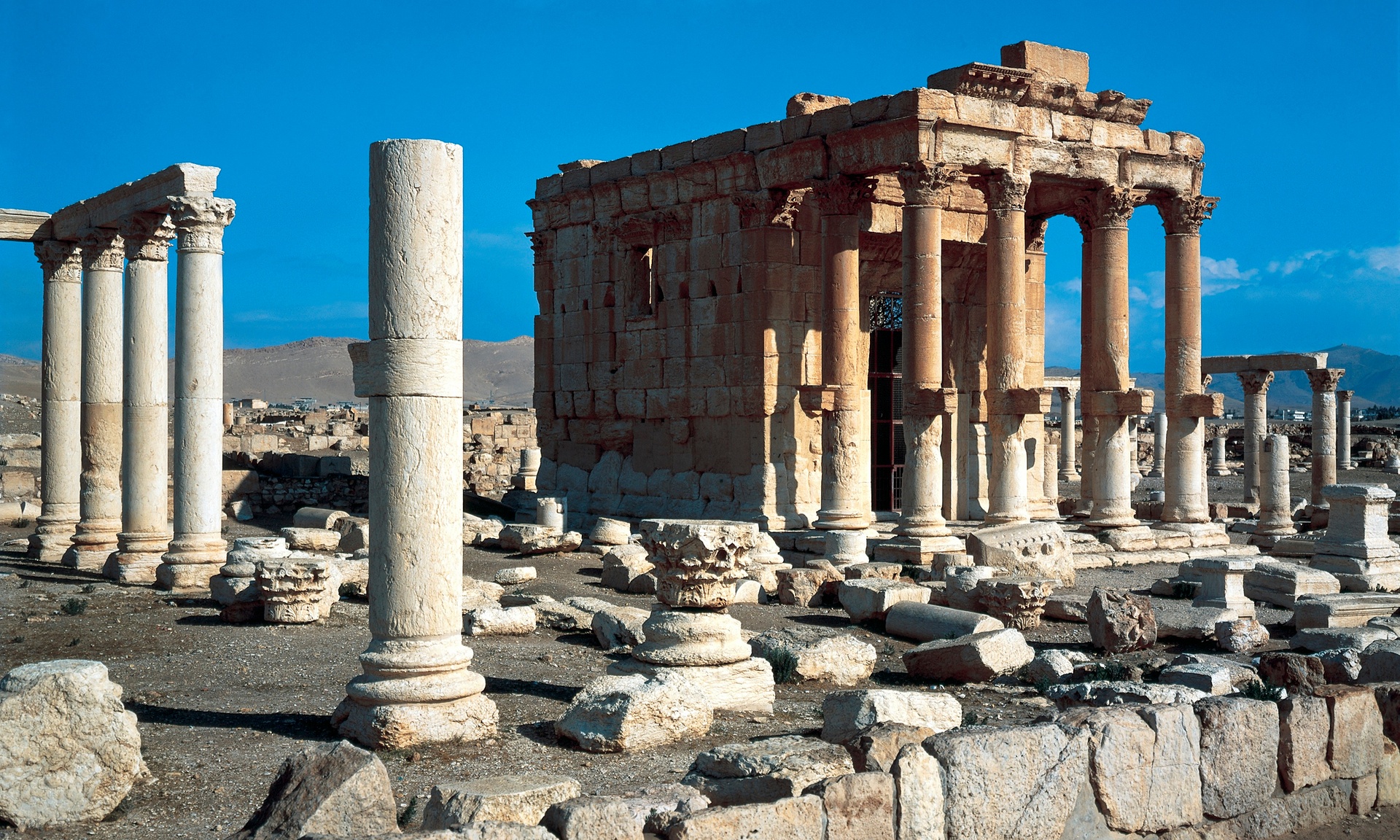Islamic State Blows Up 2000 Year Old Temple In Palmyra
Temple of Baal Shamin, which has been apparently blown up by IS
NEW DELHI: When the Islamic State captured the ancient city of Palmyra, the world watched in horror as the group’s advance threatened the city’s cultural history as archaeological finds date back to the Neolithic age. News then surfaced that the Islamic State was carrying out executions in Palmyra’s historic buildings, and just a few days ago, the militants executed the city’s antiquities chief, Khaled Asaad, who spent more than 50 years of his life safeguarding Palmyra’s heritage. Now, the Islamic State has destroyed Palmyra's ancient temple of Baalshamin -- a 2000 year old temple that dates to the first century AD.
“Daesh placed a large quantity of explosives in the temple of Baal Shamin ... and then blew it up causing much damage to the temple,” said Maamoun Abdulkarim, Syria’s antiquities chief. “The [inner area of the temple] was destroyed and the columns around collapsed,” said Abdulkarim.
The Syrian Observatory for Human Rights, an independent UK based group that monitors the country’s civil war, confirmed the destruction of the temple. The group quoted residents who had fled Palmyra stating that the Islamic State had placed explosives inside the temple over a month ago.
This is not the first time that the militant group has destroyed a culturally important structure. In January this year, the Islamic State ransacked the central library in the Iraqi city of Mosul, burning thousands of books. In February, a video emerged showing the destruction of ancient artefacts in Mosul’s central museum. In March, the militants used explosives and bulldozers on Nimrud, one of Iraq's greatest archaeological treasures. Also in March, ruins in Hatra were destroyed.
Palmyra was captured in May this year, and many worry that the UNESCO world heritage city will suffer a terrible fate. An indication of this was provided last month, when pictures emerged of militants destroying artefacts looted from the ancient ruins of Palmyra. The pictures showed six statues being hit with sledgehammers whilst a crowd looked on. At the same time, Syria's antiquities director Maamoun Abdelkarim said that IS group had destroyed a 2000-year-old statue of a lion from the Palmyra ruins.
The group also published photos of what they said was the destruction of two Islamic shrines near Palmyra, which they called "manifestations of polytheism.”
In fact, the recent execution of Asaad was also linked to a so-called objection of polytheism, with a sign attached to the pictures being circulated online stating that Asaad was executed for overseeing “idols” in Palmyra, attending “infidel” conferences and for staying in touch with his brother and palace officials even after IS took over.
In addition to threatening Palmyra’s cultural heritage, the militant group have killed over 200 people, including civilians, in an around Palmyra since May.
Here is a look at the cultural richness of Palmyra which stands threatened.
Temple of Baal-Shamin, Palmyra
Dedicated in 131, the temple of Baalshamin has been called Palmyra's "most significant surviving temple other than that of Bel". Baalshamin or Ba'al Šamem[2] (Aramaic: ??? ????), lit. 'Lord of Heaven(s)', is a Northwest Semitic god and a title applied to different gods at different places or times in ancient Middle Eastern inscriptions, especially in Canaan/Phoenicia and Syria. The title was most often applied to Hadad, who is also often titled just Ba‘al. Baalshamin was one of the two supreme gods and the sky god of pre-Islamic Palmyra in ancient Syria. (Bel was the other supreme god.) There his attributes were the eagle and the lightning bolt, and he perhaps formed a triad with the lunar god Aglibol and the sun god Malakbel.
Gate of the fortified Temple of Bel
Center of Bel
The Temple of Baal (Arabic: ???? ??) is an ancient stone ruin located in Palmyra, Syria. The temple, consecrated to the Semitic godBaal, worshipped at Palmyra in triad with the lunar god Aglibol and the sun god Yarhibol, formed the center of religious life in Palmyraand was dedicated in 32 CE.[1][2] Aedeen Cremin considers its ruins the "best preserved" at Palmyra.[3]
Lion in the garden of Palmyra Archeological Museum
Grande collonade street
The Great Colonnade at Palmyra was the main colonnaded avenue in the ancient city of Palmyra in the Syrian Desert. The colonnade was built in several stages during the second and third century CE and stretched for more than a kilometer. It linked theTemple of Bel, in the southeastern end of the city, to the West Gate and the Funerary Temple in the northwestern part.
Palmyra theater
Diocletian's Camp, Palmyra
Hadrian's Gate
This arch is named for the Roman emperor who visited Palmyra in 129 A.D. and conferred upon it the status of a "free" metropolis within the empire.
Qalat ibn maan
View of Palmyra
The tariff court





